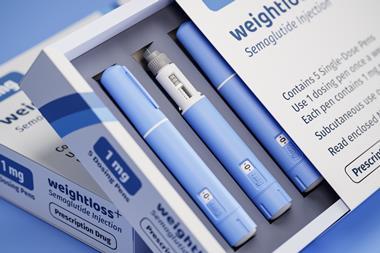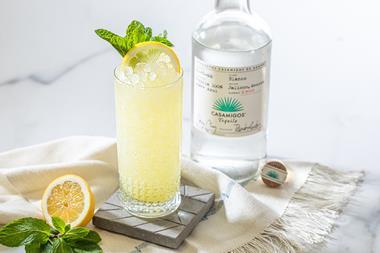Supermarkets and suppliers might think they are doing a clear job with labelling. But are consumers getting the right messages? Eight mothers were quizzed about what labels were telling them. Liz Hamson reports on surprising findings
Supermarkets and leading manufacturers are losing the trust of shoppers because of “misleading” and “confusing” nutrition and health claims on packaging - and if traffic-light labelling were introduced it could add to the problem.
This was the conclusion of a focus group brought together exclusively for The Grocer as Tesco launched the trial of its traffic-light system ahead of EU moves to reform the laws governing nutritional and health claims on food.
Social and market research company Diagnostics asked eight mothers what they thought of leading own label and branded products’ labelling - and how it should be improved. Most of the group, half of which are housewives, the other half in part-time or full-time work, admit that health concerns fuelled by the media and peer pressure encourage them to scrutinise labelling more closely than in the past.
They say they have noticed an increase in the prominence of health and nutrition claims on packaging and that they are beginning to influence what they buy.
However, they are becoming increasingly sceptical of some of the claims made and, as a result, are steering clear of many products that are in fact healthy.
Jane Alty, Diagnostics director, says: “Consumer trust is being eroded. No brand or store emerged as outstanding in respect of labelling, although some do enjoy in-built advantages because of their heritage and brand strength.” Heinz, Birds Eye, Marks and Spencer, Waitrose, Tesco and Sainsbury are generally well respected by consumers, as is their labelling. However, the labelling used by several other manufacturers and retailers sends out mixed messages.
One problem, she suggests, is that labelling is only part of the equation. The first assumption shoppers make is based on the package design. Only then do they look at the product description, its sub-brand (for instance, Healthy Living, Be Good To Yourself), before taking in icons and key phrases, then finally nutritional information and ingredients.
If the packaging and the positive labelling cues on the front of packaging are seen to be at odds with the information on the back, the whole message can be undermined.
Hazel, a dance teacher with two children aged 11 and eight, points to Tesco’s Healthy Living Sausages. “I picked them up because they say they contain half the fat of normal sausages.” But when she looks at the label at the back, Hazel says frankly that what she reads does not send out a ‘Healthy Living’ message to her.
Nancy, a former tax consultant with a three-year-old boy and another baby on the way, agrees with Hazel that the Healthy Living label could be “misleading”.
Ironically, relatively healthy products such as Nestlé Munch Bunch Drinky and Safeway Juice Blast are in fact deemed unhealthy by our group because of their bright child-friendly packaging, which, in both cases, overrides any positive cues.
Many of the mums have taken on board the message that certain products often contain high levels of sugar and salt, so claims about other dietary benefits on the packs do not wash with them.
Experience of the product also comes into play. Despite the strong positive cues on the packaging and the claim that it contains 70% fruit, Kellogg’s Fruit Winders, for instance, “stick to your teeth all day”, says Hazel’. She doesn’t think this sits well with the 70% fruit message.
Scientific language also arouses suspicion and the use of certain words in particular. Nancy says: “They put salt under sodium and some people might not know what that is. Sometimes they list salt and sodium. What’s tetrasodium? It sounds like a dinosaur.”
The use of the word sodium is a moot point with retailers and manufacturers that would also prefer to use the word salt only, but are bound by current legislation to declare sodium content.
But sodium is not the only ingredient that troubles consumers. Sweeteners elicit a negative response from the group judging by their initial reactions to a bottle of Co-op Apple and Blackberry Sparkling Spring Water. The pack is a clear, blue plastic bottle with a silver label and fruit references that the group agrees has a healthier appearance than The Simpsons H2O drink. But because the Co-op states clearly on the front of the bottle that it contains sweeteners, the group prefers the Simpsons’ drink, despite closer scrutiny of the back of the pack which reveals that it, too, contains sweeteners. Alty says: “It’s a classic example of consumer confusion based on the initial assessment of pack graphics and product descriptor.”
The problems in perception don’t end there. Different and apparently contradictory quantities of particular ingredients also cause consternation. Denise, who has four children aged between three and 12, picks up the Birds Eye 100% cod fillet fish fingers. “If I was buying fish fingers I’d always look at whether they are 100% cod fillet, but looking on the side of the packet, it seems to have 64% fish - is that because the rest is breadcrumbs? But I like the fact that it contains no artificial flavouring or colouring.”
Likewise, the group questions the claim on Bowyers Sausages that they are 95% fat-free, but contain 66% pork, which they say confuses the fat and meat content. Even a healthy product such as Birds Eye Steamed Vegetables prompts the response from Nancy: “There’s nothing in it except vegetables… supposedly.”
Pressed further, she confuses bagged salads with frozen vegetables: “I always worry whether there are gasses pumped into the bag to keep it fresh.”
Though some products get a thumbs up for clear no-nonsense labelling - Shredded Wheat and Heinz Baked Beans, for instance - spontaneous concerns readily emerge throughout the session about labelling that is hard to understand or which comes across to the group as “misguided”.
Terms such as ‘controlled salt’ or ‘half fat’ are considered next to meaningless and a lack of information on the labelling is often taken to mean that the product is unhealthy. One member of the group goes so far as to say: “I’d never buy anything that’s from a value range and I think if there’s no information on it, it’s got to have some bad stuff in it - otherwise they’d say something.”
Information regarding portion or serving sizes is problematic if not stated clearly, and endorsements such as the Beady Eye Promise on Sainsbury’s Blue Parrot Café range are not familiar or understood.
Fortunately, other labels elicit a more positive response. Everyone in the group instinctively trusts terms such as organic and fair trade and the information they most actively seek out is that regarding levels of salt, sugar and fat. Claims that a product has a particular health benefit register as interesting - though not essential.
The group agrees that nutrition labelling should be clearer and that simple front-of-pack icons are easy to take in when rushing round the store. But, they argue, the information has to be meaningful and substantiated by more detailed nutrition information on the back of the pack. Icons accompanied by what they feel is contradictory information elsewhere on the pack are deemed confusing, and terms such as ‘high’ and ‘low’ and ‘less than’ and ‘more than’ are felt to be misleading.
The group also feels that whether front or back-of-pack, there should be more information on portion sizes and how much they contribute to the government’s 5-a-day guidelines on fruit and vegetable consumption, as well as more general guidance on recommended daily amounts - especially where children’s foods are concerned. Scientific language should, where possible, be kept to a bare minimum as it confuses the group and is mistrusted.
The group’s overriding concern is that they are told the facts, says Alty. “Consumers want the truth, both good and bad. Knowledge is empowerment and that enables them to make informed choices. Less healthy foods are unlikely to be jettisoned altogether, but, rather, consumers may reduce their consumption on the grounds that everything is okay in moderation.”
As with every other aspect of the health and food debate, there are no simple solutions. However, the message from these shoppers is that they can cope with detailed information when it’s clear and substantiated - good news for industry groups pushing for an extension to GDAs but a warning to those considering traffic lights that are tantamount to health warnings.
They are also adamant the system must be standardised, whatever the outcome of the current debate - and the government is still understood to be pushing ahead with traffic-light labelling ahead of the public health White Paper.
Achieving a standardised system may prove tricky following the OFT’s warning to the FDF that co-ordinated moves to increase nutrition labelling, ban ads aimed at children, reduce portion sizes or levels of salt, sugar or fat could be deemed as restricting consumer choice and therefore anti-competitive. But the industry agrees this is what is needed to help consumers make healthier choices.
The big question is: will they? The mothers in this group all professed an interest in healthy eating but when asked what they’d eaten for their most recent evening meal, only one had served up home-cooked food. For the rest it was a familiar tale of chicken nuggets and potato waffles.
Packs with appeal
>>and those that confuse
The group likes:
- The ticks and smiley faces that appear on Safeway packs
- Blue Parrot Café icons
- Birds Eye fact boxes
- Asda fact circles
- 100% content - cod fillet, for instance
- 95% fat free - or less than 5% fat
- Information on number of portions a day
- ‘Quality’ cues - such as organic or fair trade
- Information such as ‘no artificial colourings, flavourings or preservatives’
But is confused by:
- The word sodium - and its relationship to salt, as well as glucose and sugar
- Ingredients in small print that seem to give the lie to positive nutritional labelling
- Scientific terms used for complex ingredients - for example metabisulphate or tetrasodium - which assume levels of knowledge of food science that consumers simply do not have and that also tend to be swiftly dismissed by them as “undesirable”
How well the pack information works
>>and there’s little to choose between own label and brands
There is an assumption that own label is better than brands for clear, honest anad helpful information. But the focus group says there's more mistrusted than good data oon both sides.
The good:
Asda Good for You! Potato wedges.
The group is impressed by clarity of pack, which presents information in four yellow circles and assumes that ‘controlled salt’ means salt levels are lower than usual.
Blue Parrot Café
Group trusts the ticks on Alphabetti and icons on Football Laces Spaghetti
Heinz Weight Watchers
Heritage cues and the Weight Watchers sub-brand stand the brand in good stead with the group. Clear information reinforces trust.
Shredded Wheat
Considered to have the clearest and most trustworthy information. “100% wholewheat shouts out at me,” is one verdict. The claim that Shredded Wheat helps to lower cholesterol is thought to be of more interest to adults than kids.
Birds Eye 100% Cod Fillet Fish Fingers
Clear labelling reassures mums - though there are a few raised eyebrows over the claim in the list of ingredients that they contain only 64% cod fillet. “Does that mean the rest is breadcrumbs?” asks one. They are critical of similarity of packaging to Birds Eye Fish Fingers, which on closer scrutiny are found to contain “100% minced white fillet.”
The not-so-good
Tesco Healthy Living Sausages
Actual ingredients (preservatives and additives) are felt to undermine the Healthy Living tag and provoke strong reaction from the group. “It’s called Healthy Living, but look what it contains. I think this is very misleading,” is one comment.
Asda 100% Cod Fillet Fish Fingers
Ingredients, when scrutinised, undermine the 100% claim, say the mothers.
Safeway Strawberry Delight Dessert
An absence of information is cause for concern and the general assumption is that it is less healthy.
Morrisons Bettabuy Instant Noodles
Again, absence of information troubles the group. The ingredients list both salt and sodium: “What’s the difference?” asks one member.
Nestlé Munch Bunch Drinky+
Branding deemed meaningless.
Bowyers 95% Fat-Free Sausages
Pack suggests lean cuts to group. On scrutiny of the ingredients, product is found to contain 66% pork - causing confusion over fat and meat content.
Kellogg’s Real Fruit Winders
Lots of healthy cues on pack such as ‘70% fruit’. But mums are sceptical. “What’s the other 30% then?” says one. Experience overrides the cues in some cases as another mother adds: “I bought it once. It sticks on my children’s teeth all day.”There is an assumption that own label is better than brands for clear, honest and helpful information. But the focus group says there’s more mistrusted than good data on both sides
Supermarkets and leading manufacturers are losing the trust of shoppers because of “misleading” and “confusing” nutrition and health claims on packaging - and if traffic-light labelling were introduced it could add to the problem.
This was the conclusion of a focus group brought together exclusively for The Grocer as Tesco launched the trial of its traffic-light system ahead of EU moves to reform the laws governing nutritional and health claims on food.
Social and market research company Diagnostics asked eight mothers what they thought of leading own label and branded products’ labelling - and how it should be improved. Most of the group, half of which are housewives, the other half in part-time or full-time work, admit that health concerns fuelled by the media and peer pressure encourage them to scrutinise labelling more closely than in the past.
They say they have noticed an increase in the prominence of health and nutrition claims on packaging and that they are beginning to influence what they buy.
However, they are becoming increasingly sceptical of some of the claims made and, as a result, are steering clear of many products that are in fact healthy.
Jane Alty, Diagnostics director, says: “Consumer trust is being eroded. No brand or store emerged as outstanding in respect of labelling, although some do enjoy in-built advantages because of their heritage and brand strength.” Heinz, Birds Eye, Marks and Spencer, Waitrose, Tesco and Sainsbury are generally well respected by consumers, as is their labelling. However, the labelling used by several other manufacturers and retailers sends out mixed messages.
One problem, she suggests, is that labelling is only part of the equation. The first assumption shoppers make is based on the package design. Only then do they look at the product description, its sub-brand (for instance, Healthy Living, Be Good To Yourself), before taking in icons and key phrases, then finally nutritional information and ingredients.
If the packaging and the positive labelling cues on the front of packaging are seen to be at odds with the information on the back, the whole message can be undermined.
Hazel, a dance teacher with two children aged 11 and eight, points to Tesco’s Healthy Living Sausages. “I picked them up because they say they contain half the fat of normal sausages.” But when she looks at the label at the back, Hazel says frankly that what she reads does not send out a ‘Healthy Living’ message to her.
Nancy, a former tax consultant with a three-year-old boy and another baby on the way, agrees with Hazel that the Healthy Living label could be “misleading”.
Ironically, relatively healthy products such as Nestlé Munch Bunch Drinky and Safeway Juice Blast are in fact deemed unhealthy by our group because of their bright child-friendly packaging, which, in both cases, overrides any positive cues.
Many of the mums have taken on board the message that certain products often contain high levels of sugar and salt, so claims about other dietary benefits on the packs do not wash with them.
Experience of the product also comes into play. Despite the strong positive cues on the packaging and the claim that it contains 70% fruit, Kellogg’s Fruit Winders, for instance, “stick to your teeth all day”, says Hazel’. She doesn’t think this sits well with the 70% fruit message.
Scientific language also arouses suspicion and the use of certain words in particular. Nancy says: “They put salt under sodium and some people might not know what that is. Sometimes they list salt and sodium. What’s tetrasodium? It sounds like a dinosaur.”
The use of the word sodium is a moot point with retailers and manufacturers that would also prefer to use the word salt only, but are bound by current legislation to declare sodium content.
But sodium is not the only ingredient that troubles consumers. Sweeteners elicit a negative response from the group judging by their initial reactions to a bottle of Co-op Apple and Blackberry Sparkling Spring Water. The pack is a clear, blue plastic bottle with a silver label and fruit references that the group agrees has a healthier appearance than The Simpsons H2O drink. But because the Co-op states clearly on the front of the bottle that it contains sweeteners, the group prefers the Simpsons’ drink, despite closer scrutiny of the back of the pack which reveals that it, too, contains sweeteners. Alty says: “It’s a classic example of consumer confusion based on the initial assessment of pack graphics and product descriptor.”
The problems in perception don’t end there. Different and apparently contradictory quantities of particular ingredients also cause consternation. Denise, who has four children aged between three and 12, picks up the Birds Eye 100% cod fillet fish fingers. “If I was buying fish fingers I’d always look at whether they are 100% cod fillet, but looking on the side of the packet, it seems to have 64% fish - is that because the rest is breadcrumbs? But I like the fact that it contains no artificial flavouring or colouring.”
Likewise, the group questions the claim on Bowyers Sausages that they are 95% fat-free, but contain 66% pork, which they say confuses the fat and meat content. Even a healthy product such as Birds Eye Steamed Vegetables prompts the response from Nancy: “There’s nothing in it except vegetables… supposedly.”
Pressed further, she confuses bagged salads with frozen vegetables: “I always worry whether there are gasses pumped into the bag to keep it fresh.”
Though some products get a thumbs up for clear no-nonsense labelling - Shredded Wheat and Heinz Baked Beans, for instance - spontaneous concerns readily emerge throughout the session about labelling that is hard to understand or which comes across to the group as “misguided”.
Terms such as ‘controlled salt’ or ‘half fat’ are considered next to meaningless and a lack of information on the labelling is often taken to mean that the product is unhealthy. One member of the group goes so far as to say: “I’d never buy anything that’s from a value range and I think if there’s no information on it, it’s got to have some bad stuff in it - otherwise they’d say something.”
Information regarding portion or serving sizes is problematic if not stated clearly, and endorsements such as the Beady Eye Promise on Sainsbury’s Blue Parrot Café range are not familiar or understood.
Fortunately, other labels elicit a more positive response. Everyone in the group instinctively trusts terms such as organic and fair trade and the information they most actively seek out is that regarding levels of salt, sugar and fat. Claims that a product has a particular health benefit register as interesting - though not essential.
The group agrees that nutrition labelling should be clearer and that simple front-of-pack icons are easy to take in when rushing round the store. But, they argue, the information has to be meaningful and substantiated by more detailed nutrition information on the back of the pack. Icons accompanied by what they feel is contradictory information elsewhere on the pack are deemed confusing, and terms such as ‘high’ and ‘low’ and ‘less than’ and ‘more than’ are felt to be misleading.
The group also feels that whether front or back-of-pack, there should be more information on portion sizes and how much they contribute to the government’s 5-a-day guidelines on fruit and vegetable consumption, as well as more general guidance on recommended daily amounts - especially where children’s foods are concerned. Scientific language should, where possible, be kept to a bare minimum as it confuses the group and is mistrusted.
The group’s overriding concern is that they are told the facts, says Alty. “Consumers want the truth, both good and bad. Knowledge is empowerment and that enables them to make informed choices. Less healthy foods are unlikely to be jettisoned altogether, but, rather, consumers may reduce their consumption on the grounds that everything is okay in moderation.”
As with every other aspect of the health and food debate, there are no simple solutions. However, the message from these shoppers is that they can cope with detailed information when it’s clear and substantiated - good news for industry groups pushing for an extension to GDAs but a warning to those considering traffic lights that are tantamount to health warnings.
They are also adamant the system must be standardised, whatever the outcome of the current debate - and the government is still understood to be pushing ahead with traffic-light labelling ahead of the public health White Paper.
Achieving a standardised system may prove tricky following the OFT’s warning to the FDF that co-ordinated moves to increase nutrition labelling, ban ads aimed at children, reduce portion sizes or levels of salt, sugar or fat could be deemed as restricting consumer choice and therefore anti-competitive. But the industry agrees this is what is needed to help consumers make healthier choices.
The big question is: will they? The mothers in this group all professed an interest in healthy eating but when asked what they’d eaten for their most recent evening meal, only one had served up home-cooked food. For the rest it was a familiar tale of chicken nuggets and potato waffles.
Packs with appeal
>>and those that confuse
The group likes:
- The ticks and smiley faces that appear on Safeway packs
- Blue Parrot Café icons
- Birds Eye fact boxes
- Asda fact circles
- 100% content - cod fillet, for instance
- 95% fat free - or less than 5% fat
- Information on number of portions a day
- ‘Quality’ cues - such as organic or fair trade
- Information such as ‘no artificial colourings, flavourings or preservatives’
But is confused by:
- The word sodium - and its relationship to salt, as well as glucose and sugar
- Ingredients in small print that seem to give the lie to positive nutritional labelling
- Scientific terms used for complex ingredients - for example metabisulphate or tetrasodium - which assume levels of knowledge of food science that consumers simply do not have and that also tend to be swiftly dismissed by them as “undesirable”
How well the pack information works
>>and there’s little to choose between own label and brands
There is an assumption that own label is better than brands for clear, honest anad helpful information. But the focus group says there's more mistrusted than good data oon both sides.
The good:
Asda Good for You! Potato wedges.
The group is impressed by clarity of pack, which presents information in four yellow circles and assumes that ‘controlled salt’ means salt levels are lower than usual.
Blue Parrot Café
Group trusts the ticks on Alphabetti and icons on Football Laces Spaghetti
Heinz Weight Watchers
Heritage cues and the Weight Watchers sub-brand stand the brand in good stead with the group. Clear information reinforces trust.
Shredded Wheat
Considered to have the clearest and most trustworthy information. “100% wholewheat shouts out at me,” is one verdict. The claim that Shredded Wheat helps to lower cholesterol is thought to be of more interest to adults than kids.
Birds Eye 100% Cod Fillet Fish Fingers
Clear labelling reassures mums - though there are a few raised eyebrows over the claim in the list of ingredients that they contain only 64% cod fillet. “Does that mean the rest is breadcrumbs?” asks one. They are critical of similarity of packaging to Birds Eye Fish Fingers, which on closer scrutiny are found to contain “100% minced white fillet.”
The not-so-good
Tesco Healthy Living Sausages
Actual ingredients (preservatives and additives) are felt to undermine the Healthy Living tag and provoke strong reaction from the group. “It’s called Healthy Living, but look what it contains. I think this is very misleading,” is one comment.
Asda 100% Cod Fillet Fish Fingers
Ingredients, when scrutinised, undermine the 100% claim, say the mothers.
Safeway Strawberry Delight Dessert
An absence of information is cause for concern and the general assumption is that it is less healthy.
Morrisons Bettabuy Instant Noodles
Again, absence of information troubles the group. The ingredients list both salt and sodium: “What’s the difference?” asks one member.
Nestlé Munch Bunch Drinky+
Branding deemed meaningless.
Bowyers 95% Fat-Free Sausages
Pack suggests lean cuts to group. On scrutiny of the ingredients, product is found to contain 66% pork - causing confusion over fat and meat content.
Kellogg’s Real Fruit Winders
Lots of healthy cues on pack such as ‘70% fruit’. But mums are sceptical. “What’s the other 30% then?” says one. Experience overrides the cues in some cases as another mother adds: “I bought it once. It sticks on my children’s teeth all day.”There is an assumption that own label is better than brands for clear, honest and helpful information. But the focus group says there’s more mistrusted than good data on both sides













No comments yet